
How China's Battle Against Air Pollution Left India's In The Dust
Early this month, while New Delhi struggled with severe air pollution, Chinese embassy spokesperson Yu Jing took to X to compare the air pollution crises in both countries, and offered to share Beijing's experience in improving its air quality. The post's context was the annual episode of north Indian skies turning sickly yellow, which sparked rare protests by citizens of Delhi this year.
Just over a decade ago, China was in the same boat. Its megacities Beijing and Shanghai regularly had PM2.5 levels more than 10-20 times the safe level recommended by the World Health Organization (WHO). PM2.5 is fine particulate matter that can penetrate the lung barrier and enter the blood system. The WHO says its average annual level in the air shouldn't exceed 5 micrograms per cubic metre (μg/m3).
Also Read | How Diwali crackers blow air pollution numbers through the roof. In chaPublic anger was mounting. Beijing's crisis was linked to rapid industry growth, relaxed environmental regulations, and an energy-intensive growth model that relied heavily on infrastructure, according to Calvin Quek of Smith School of Enterprise and Environment at Oxford University.
A pivotal moment came in 2013, when China unveiled a sweeping national action plan, regarded as the toughest in its history. What followed were tightened environmental rules, curbs on vehicles in major cities, binding PM2.5 reduction targets on local governments, nationwide air monitoring stations, and a clampdown on coal and other high-polluting industries.
A clean sweepThe results were stunning. China slashed PM2.5 levels by 41% from 2014 to 2023, according to the Energy Policy Institute at the University of Chicago (EPIC). The dramatic improvement left South Asia largely alone as the most polluted region on earth. In 2023, China's average PM2.5 level was 27.4 μg/m3, still above the global average (24 μg/m3), but a remarkable achievement nonetheless.
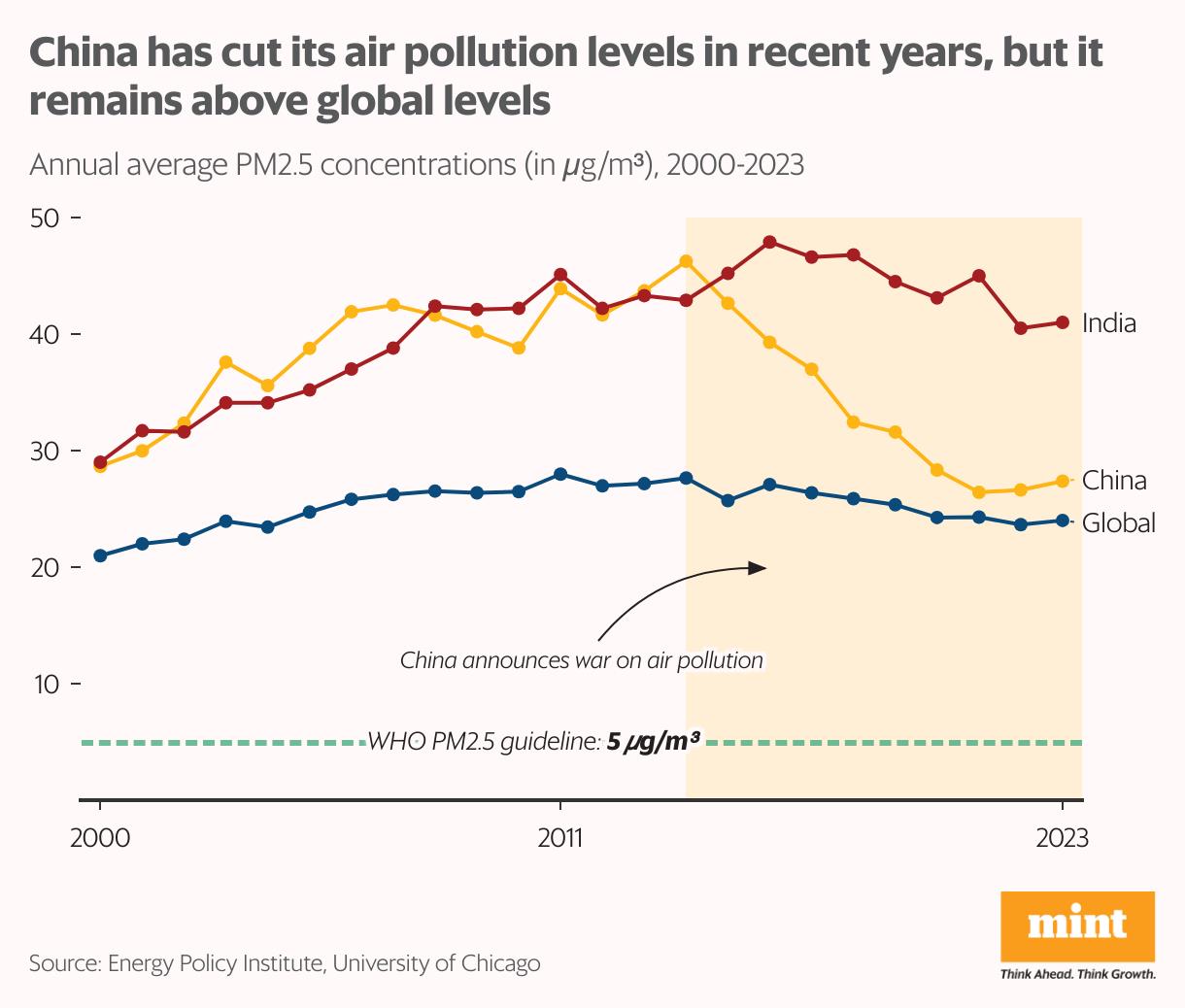
The contrast with India couldn't be starker. While residents of Beijing spent a 20% of their time last year with PM2.5 levels over 10 times the WHO limit, this share was 60% for residents of New Delhi, according to the latest World Air Quality Report by IQAir, a Swiss air-quality technology company.“Despite governmental measures such as the National Clean Air Programme (NCAP) aiming to reduce pollution levels, challenges persist due to inconsistent policy implementation and inadequate infrastructure," it said.
Also Read | Environment ministry orders petrol cars, ignoring advisory on cleaner vehic
China's success wasn't just because of money, but also political will and strict accountability. India has the funds but lacks the structures to use it effectively. A 2025 report by climate policy organizations Clean Air Fund and Climate Policy Initiative said India pocketed $19.8 billion in air quality funding during 2019-2023, making it the top recipient globally, with a 16% share. Yet, this financial advantage hasn't translated into success.
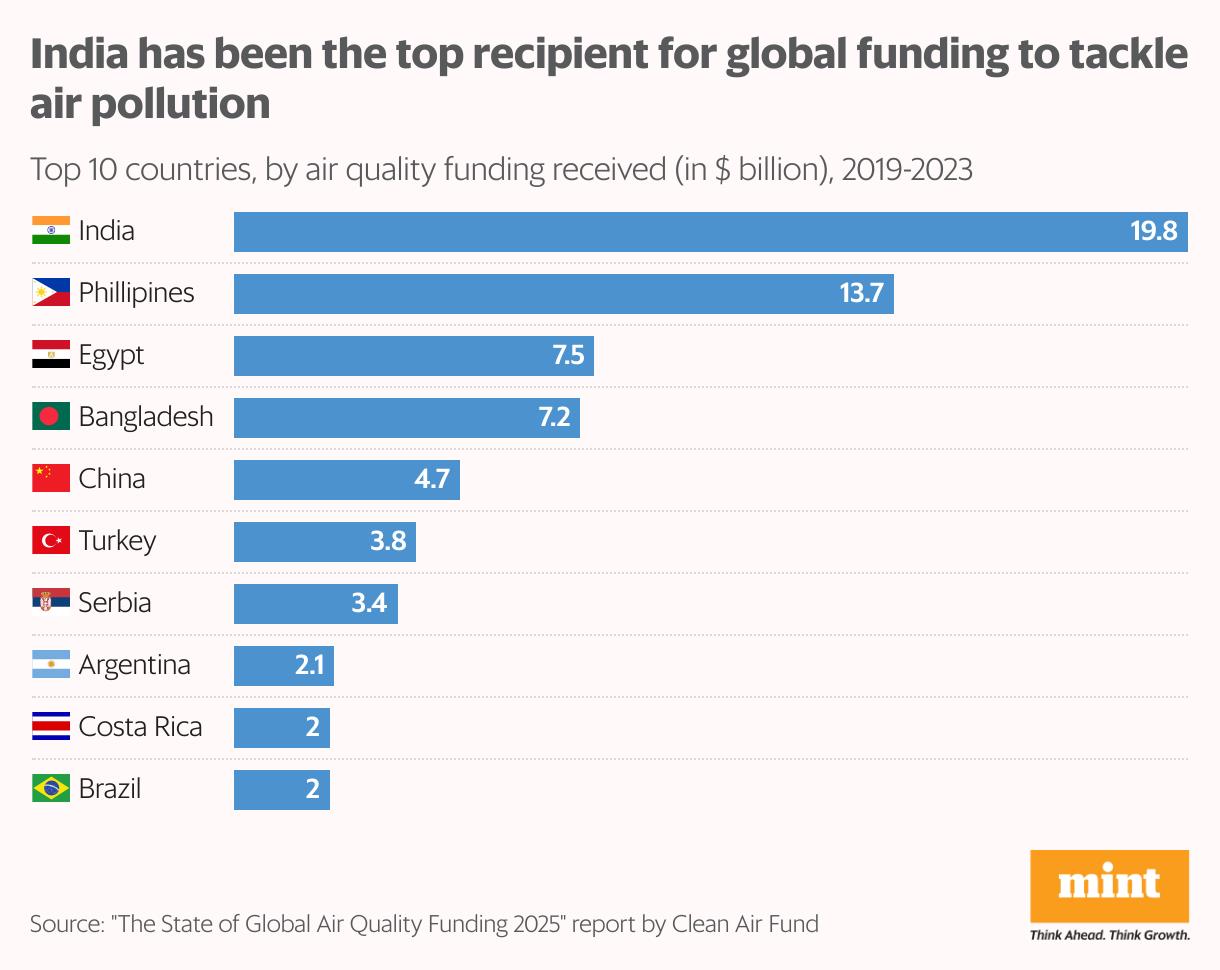
Unused cash piles
Domestically, too, the pattern repeats itself. The success of NCAP- launched by the environment ministry in 2019 to reduce particulate matter levels in 130 cities by 20-30% by 2024 (later extended to 40% by 2026) from 2017-18 levels-has been iffy. With the March 2026 deadline approaching, the environment ministry's latest data reveals that just 64 of the 130 cities (49%) have seen a PM10 reduction of 20% or more between FY18 and FY25, while only one in five has achieved the programme's ambitious 40% reduction target.
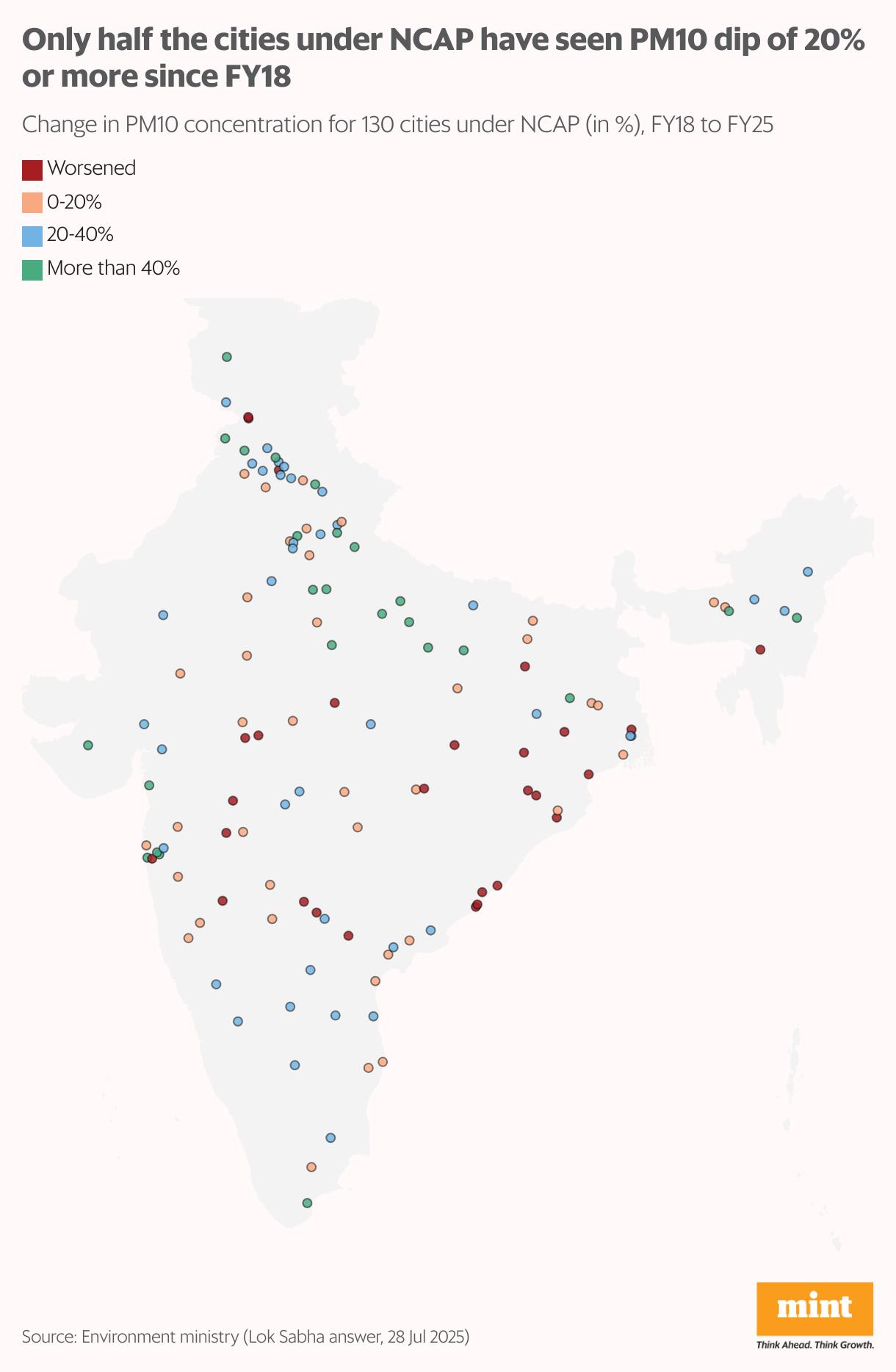
The plan has received ₹19,711 crore in allocations since FY20, but a report by the Foundation for Responsive Governance said only 52% of this had been used by December 2024. Not only did fund releases consistently lag allocations, the amounts released also declined each year. An analysis of 126 cities across 20 states exposed significant state-level issues in both fund releases and utilization.
The funds came from two sources: the ministry, which funded 78 cities in 20 states, and the 15th Finance Commission grants, which funded 48 cities in 15 states. Among the first set, 11 of 20 states used less than 80% of what they got. Of the 15 states in the second set, 10 failed to use 80% of the released funds, which were already conditional on how well they performed on air quality improvement.
Moreover, the NCAP focuses on PM10-primarily dust-rather than the more harmful PM2.5 that comes from vehicles, waste burning and industries, which experts said should be the priority.
The price we all payThe governance failure has a devastating human cost. According to EPIC's Air Quality Life Index report, the PM2.5 level exceeds the WHO's standards across India. Air pollution sets average life expectancy in India back by 3.5 years, meaning it has nearly twice the impact of childhood and maternal malnutrition, and more than five times that of unsafe water and sanitation.
Also Read | Tata Motors says no to softer emission rules for small cars, flags safety ri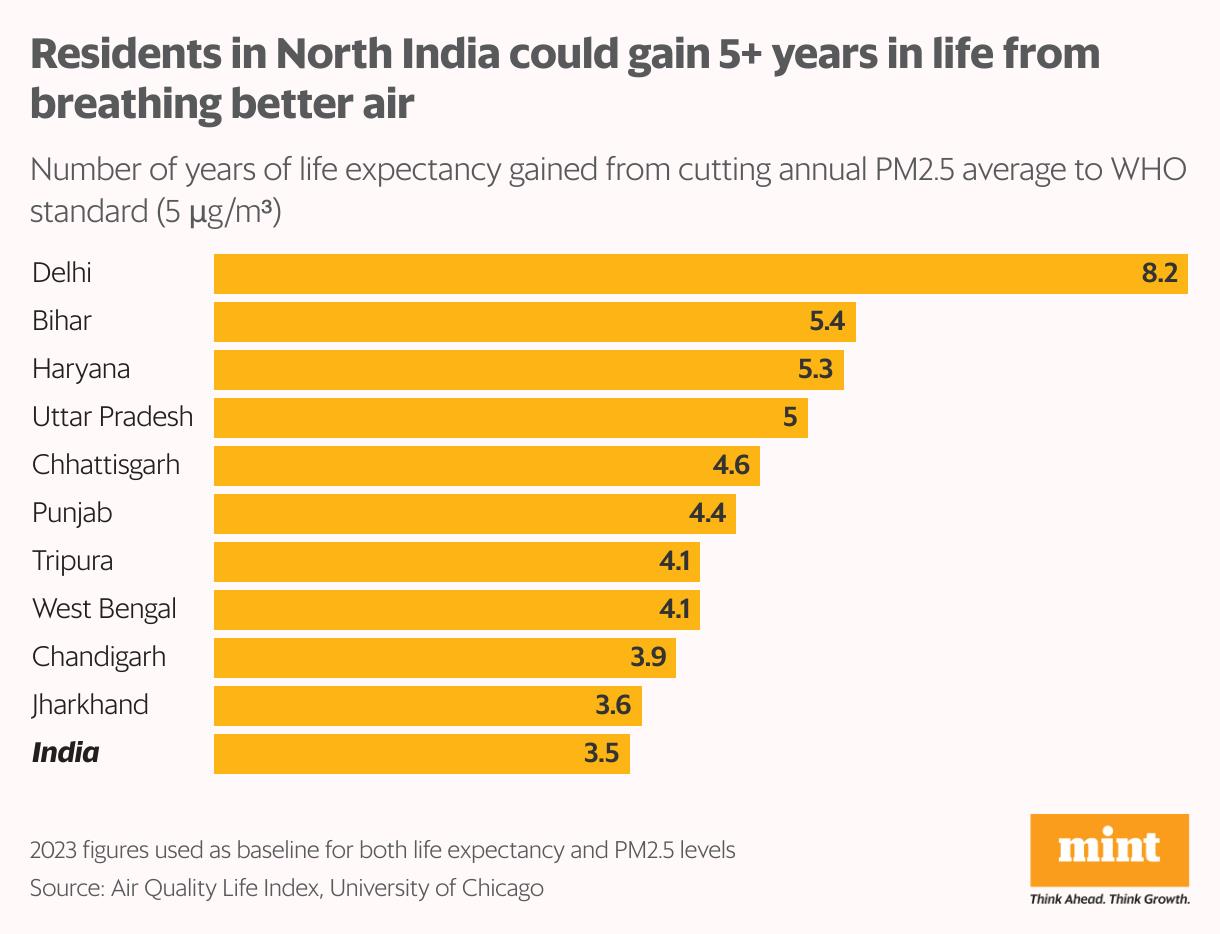
The burden is particularly severe in India's most polluted regions. Delhiites lose 8.2 years of life to PM2.5 when measured against the WHO standard (5 μg/m3), followed by Bihar (5.6 years), Haryana (5.3 years), and Uttar Pradesh (5 years). Even when compared to India's own lenient standard of 40 μg/m3, Delhi residents still lose 4.7 years.
This menace has similar roots in both China and India-rapid industrialization, a heavy reliance on coal, and massive construction activity. If those responsible for unspent allocations and missed targets are not held to account, India's cities will continue to choke while the money meant to save them sits unused.
Legal Disclaimer:
MENAFN provides the
information “as is” without warranty of any kind. We do not accept
any responsibility or liability for the accuracy, content, images,
videos, licenses, completeness, legality, or reliability of the information
contained in this article. If you have any complaints or copyright
issues related to this article, kindly contact the provider above.

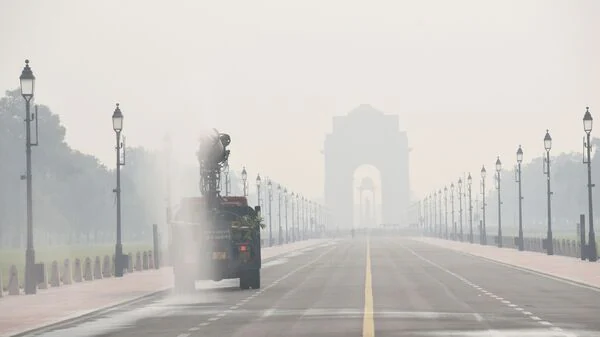
















Comments
No comment